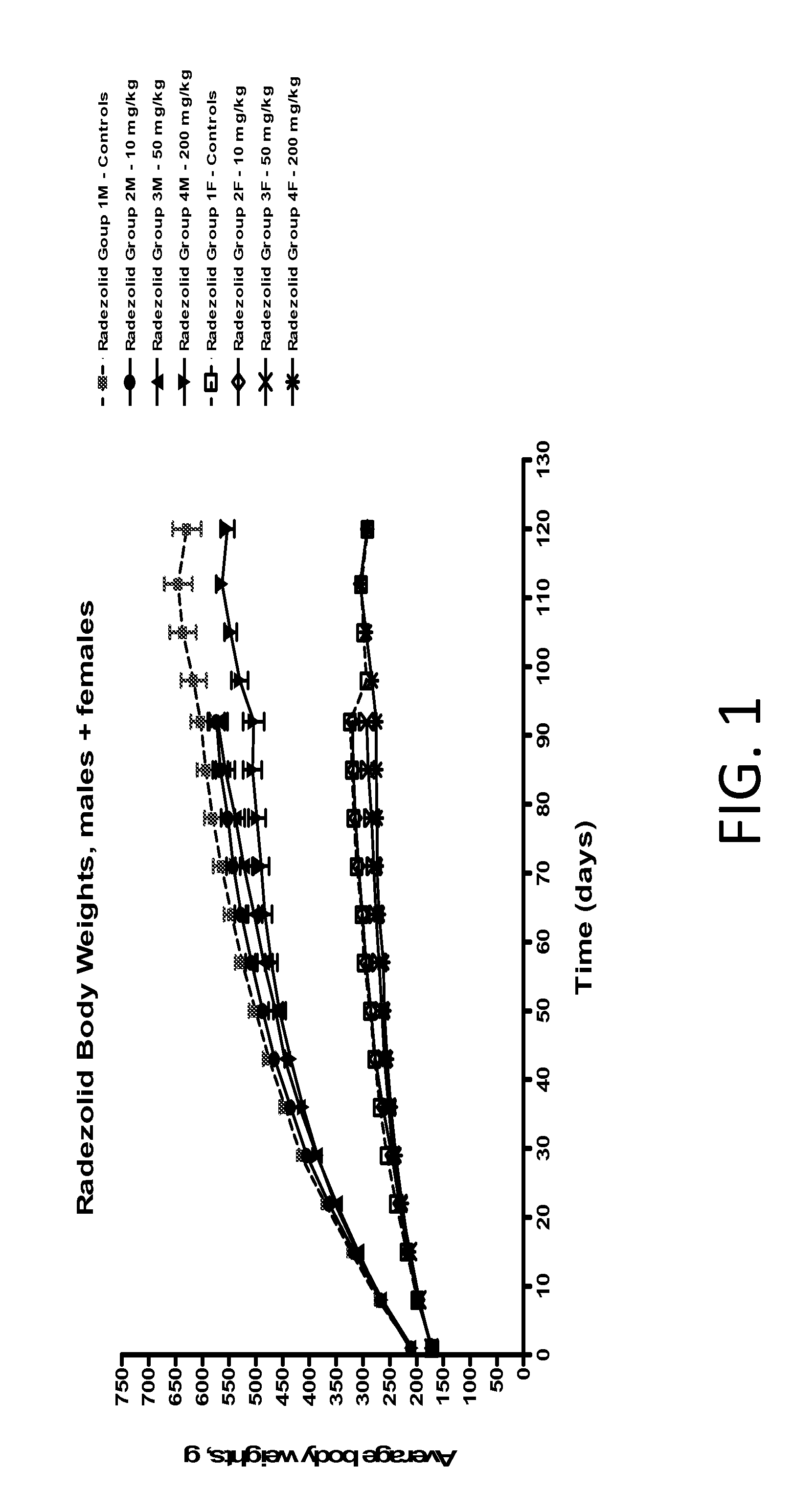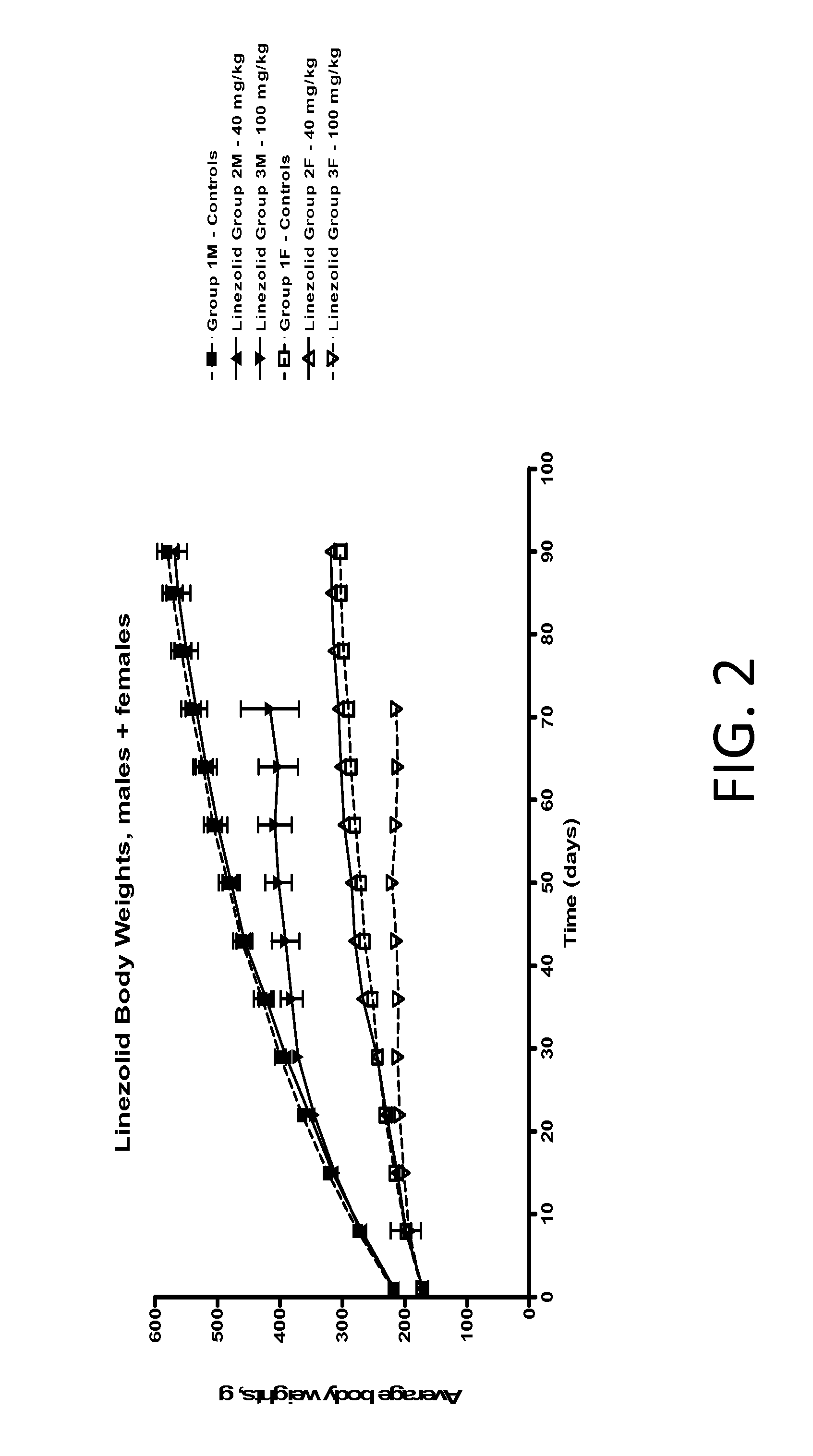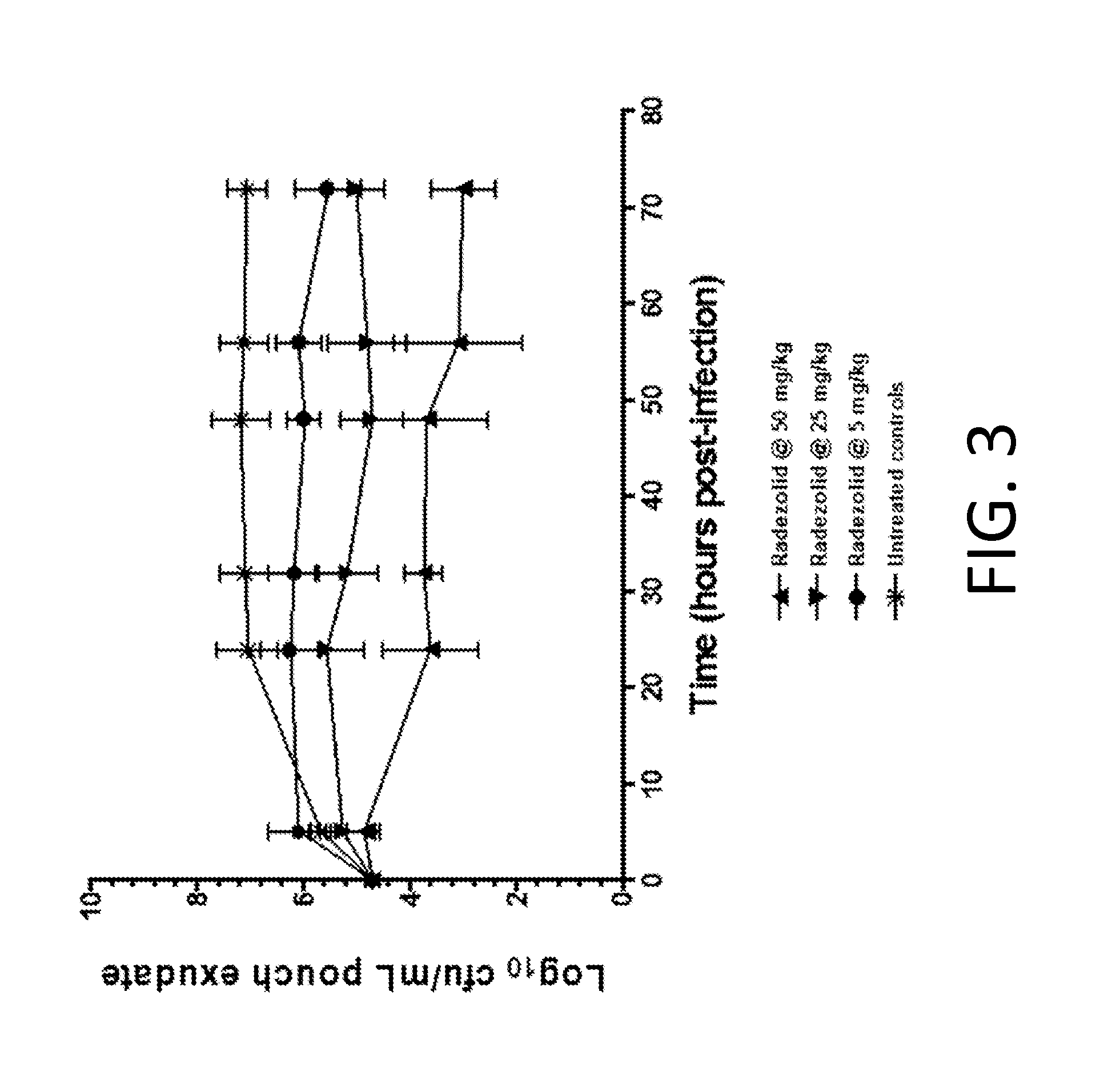Method for treating, preventing, or reducing the risk of skin infection
a technology for skin infection and prevention, applied in the direction of antibacterial agents, capsule delivery, organic active ingredients, etc., can solve the problems of acne, significant psychological burden, and large disfigurement of the afflicted person, and achieve the effect of reducing the risk of acne, preventing or reducing the risk of skin infection, and safe and effective amount of antibiotic compound
- Summary
- Abstract
- Description
- Claims
- Application Information
AI Technical Summary
Benefits of technology
Problems solved by technology
Method used
Image
Examples
example 1
Anti-Microbial Activity of Radezolid and Comparator Agents
[0850]The in vitro antimicrobial activity of radezolid (compound 4267) and comparator antimicrobial agents were evaluated against several different types of bacteria. Bacterial isolates were obtained from the American Type Culture Collection (ATCC), Manassas, Va.
[0851]Susceptibility testing was performed by the agar dilution reference method (radezolid, linezolid, and clindamycin) and broth microdilution method (all agents) as described by the Clinical and Laboratory Standards Institute (CLSI).
[0852]For the agar dilution method, Brucella agar (BBL, 211086) was prepared according to the manufacturer's instructions and cooled to 48-50° C. in a water bath. Once the agar was cooled, it was supplemented with 10 mL of hemin+vitamin K1 Solution (Remel, R450951), 1 mL of 1 mg / mL vitamin K1 working solution (Sigma, V3501), and 50 mL laked sheep blood (Remel, R54004). The media was dispensed into 50 mL centrifuge tubes and held at 48-5...
example 2
Safety of Radezolid Versus Comparator Agent
[0866]Safety of radezolid versus comparator linezolid were tested in long-term rat studies (see FIGS. 1-2). Radezolid showed good safety. As shown in FIG. 1, the male rats generally had higher body weights than the females, with similar body weights within each of the dose groups. There was 100% survival in all dose groups. No test article-related changes were observed in hematology, coagulation, clinical chemistry, or urinalysis. An unscheduled euthanization on day 75 for high-dose linezolid groups showed decreased red cell mass, absolute reticulocyte and neutrophil counts in rats dosed with 100 mg / kg / day linezolid. This is correlated with decreased cellularity of sternal and femoral bone marrow. Table 6 shows the calculated safety margin of radezolid based on these data.
TABLE 6Calculated Safety Margin of RadezolidExposure (AUC 0-24): male rats at 200 mg / kg101.9 μg * hr / mLon Day 29Exposure (AUC 0-24): human @ 300 mg dose 3.33 μg * hr / mLSaf...
example 3
Uptake of Radezolid Versus Comparator Agent
[0867]Approximately 60% of the radezolid accumulates in the cytosol of cells while approximately 40% accumulates in the lysosome. Radezolid accumulates in mammalian cells (e.g., defense cells, macrophages, lung cells, and non-phagocytic cells) to a 17-fold greater extent than linezolid. Radezolid kills intracellular S. aureus (including linezolid-resistant), Listeria monocytogenes and Legionella pneumophila, organisms that reside in different cellular compartments. Accumulation affords once-daily dosing at doses lower than those predicted by plasma levels. Accumulation offers a wider safety window for radezolid as compared to linezolid. See Lemaire et al. AAC 2010, 54(6): 6549-59.
[0868]Levels of radezolid remain high in granuloma pouch even as they decline in the plasma, contributing to efficacy at the site of infection (see FIGS. 3-4).
PUM
 Login to View More
Login to View More Abstract
Description
Claims
Application Information
 Login to View More
Login to View More - R&D
- Intellectual Property
- Life Sciences
- Materials
- Tech Scout
- Unparalleled Data Quality
- Higher Quality Content
- 60% Fewer Hallucinations
Browse by: Latest US Patents, China's latest patents, Technical Efficacy Thesaurus, Application Domain, Technology Topic, Popular Technical Reports.
© 2025 PatSnap. All rights reserved.Legal|Privacy policy|Modern Slavery Act Transparency Statement|Sitemap|About US| Contact US: help@patsnap.com



